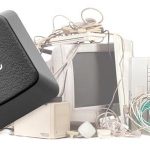Over the past decade, advancements in the Internet of Things (IoT) has had a profound impact on the manufacturing industry—to the tune of $187b of annual spend, accounting for the lion’s share of investment in the global IoT sector. No area of manufacturing has been left untouched; from production to logistics, to operations, to quality control, connected devices have the opportunity to streamline, optimize, and improve your business practices and your bottom line.
And that’s all fine and well—but how can you cut through the buzzwords and jargon to ensure your manufacturing business is making the most of the Internet of Things? Below, we’ll cover a number of IoT use cases in manufacturing and explore the leverage that industrial IoT applications are providing to businesses around the world.
Predictive Maintenance
Before IoT sensors were introduced, manufacturing equipment downtime could make the difference between a profitable quarter or ending up in the red. According to a report from analyst firm Aberdeen, the average cost of an hour of downtime across all industries was $260,000—a number that can clock in even higher when you factor in the enormous overhead associated with manufacturing, such as direct labor, utilities, and supplies and personnel cost. The cost of downtime extends beyond directly associated costs as well—delayed order fulfillment can have long-lasting ramifications and erode trust in your ability to deliver shipments on time. (Curious about your own hourly downtime cost? You can calculate it here.)
The promise of IoT sensors in equipment monitoring can make unplanned downtime (and the losses that accompany it) a thing of the past. By investing in IoT-enabled machinery, or even retrofitting legacy equipment with IoT sensors, manufacturers can now gain insight into how machinery is performing, proactively identify component failure, and analyze patterns that emerge from the collection of data to improve preventive maintenance cycles and optimize scheduled downtime.
By utilizing IoT, manufacturing plants have been able to recognize enormous savings in cost and labor—by implementing IoT technology, manufacturing giant Bosch was able to reduce downtime and optimize output, eventually boosting factory productivity by 24%. In an industry such as manufacturing, with razor-thin per-unit margins, 24% can make an incredible difference.
Inventory and Supply Chain Management
IoT’s contributions to Inventory Management and Logistics is estimated to reach between $560B to $850B per year by 2025—and regardless of the amount that is eventually invested, it will be money well spent. IoT has fundamentally transformed inventory management—from production forecasting through to transportation, real-time data collection from IoT devices has completely redefined how inventory and logistics are managed. 88% of early IoT adopters in manufacturing have reported seeing a competitive advantage in regards to streamlining the supply chain and inventory management. Furthermore, 37% of CIOs and enterprise IT staff have stated that IoT reporting on inventory management data has been the primary driver behind pilots and full-scale production programs.
The backbone of the IoT for inventory and logistics is RFID tagging: by outfitting production units with inexpensive, automatically-tracked RFID tags (rather than laborious, manually-scanned barcodes), manufacturers now have complete visibility into individual objects and capture new streams of data including:
- Temperature
- Weather
- Item condition
- Location; and more.
Feeding this information into a central inventory management system will enable the organization to not only monitor shipments after they’ve departed the factory but also automate the product ordering process and optimize production flow. Not only that, but using the IoT to ensure optimal conditions for individual components can have an impact on your final product—for example, Portland’s Rogue Brewing uses RFID to ensure that the hops used in their beers stay within optimal conditions during every stage of the transport and storage process.
Workforce Efficiency
Ultimately, the manufacturing industry is built at the intersection of three variables: the raw materials used for production, the process, and machinery that facilitates that transformation, and the human beings that drive the process. While much of the attention in the industrial IoT is dedicated to collecting data from inorganic inputs, such as machinery or product, the IoT also holds the potential to minimize labor waste and run manufacturing organizations leaner and smoother than previously believed possible. One of the driving forces behind the emergence of lean manufacturing is the vast stores of data generated by the IoT.
By implementing the IoT in your manufacturing business, tools, people, and equipment can now automatically collect, share and interact with other data and processes, offering higher levels of productivity, and taking your manufacturing to the next level.
Through the data collected through the IoT, manufacturing organizations can now:
- Increase worker safety and gain better workforce management
- Increase worker productivity
- Significantly reduce energy consumption
- Improve productivity and profitability via inventory and scrap reductions
- Improve overall yield because of integrated quality monitoring
In the coming years, no area of manufacturing that will remain untouched by the IoT, and businesses need to start leveraging the power of connected devices now to remain competitive in the future. You can get started anywhere – your business doesn’t have to wait. And whether you’re looking to streamline operations, optimize your supply chain, or improve profit margins, we have innovative ways to bring IoT to your current manufacturing environment.
Start thinking about IoT for your business with a whiteboarding session. We’ll help you explore all the options, consider opportunities you hadn’t thought of and help you make plans to move your manufacturing operation into the age of IoT efficiencies.







